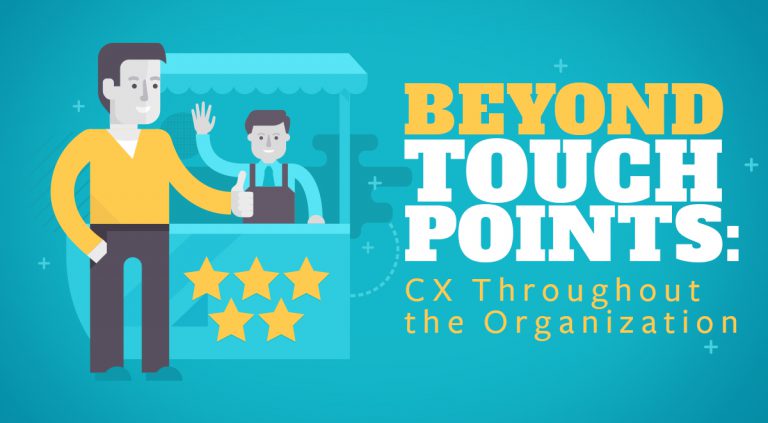
Beyond Touchpoints: Integrating CX Throughout the Organization
Managing the key touchpoints for your customers is undeniably linked to improved business performance. In fact, Gartner reports that companies will redirect 50% of product investment projects to customer experience improvements in 2017. And The Service Council reports that 60% of companies believe that customer experience will be the top source of competitive differentiation in the next three years.
Businesses have long understood the need to provide a high-quality, differentiating customer experience or customer journey. We map our touchpoints, decide which are important and measure and improve customer satisfaction with those touchpoints. And many businesses measure customer satisfaction overall and with specific transactions (e.g., sales, service calls, field service visits, etc.)
However, it is important to remember that customer experience goes beyond in-person or phone encounters with sales and service. To completely understand the customer experience with your company, you need to evaluate all points where the customer has contact with your company. To name just a few: what about invoicing and collections? Are invoices easy-to-understand? Is it easy for customers to get their billing questions answered? What about product instructions? How easy is your company to work with when the customer needs something customized? How easy is it to navigate your website? How are your POP displays in retail?
Great customer experiences require a more holistic or cross-functional perspective. Simply “bolting on” customer satisfaction measurements to your existing processes may not be enough to ensure a great customer experience. As Pete Kinser writes in UX Magazine, “Bringing customer-centered thinking into an organization is about more than just proclaiming that you’re focused on customer experience. It’s about changing your process, sure, but it goes even deeper: It’s about changing attitudes. It’s about making your customers a central organizational value that guides behaviors and decision making.”
Additionally, a process-oriented, holistic approach to improving the customer satisfaction will bear fruit in more sustainable customer relationships. After all, organizations that have an uneven customer orientation between different business functions deliver an uneven customer experience. Employees may be confused about roles and responsibilities or may become disengaged. And if the resulting customer experience is different between functions, the organization loses credibility with customers, and customer loyalty suffers.
As Alex Rawson, Ewan Duncan, and Conor Jones wrote in the Harvard Business Review, “Optimizing a single customer journey is tactical; shifting organizational processes, culture, and mind-sets to a journey orientation is strategic and transformational. Journey-based transformations are not easy, and they may take years to perfect. But the reward is higher customer and employee satisfaction, increased revenue, and lower costs. Delivering successful journeys brings about an operational and cultural shift that engages the organization across functions and from top to bottom, generating excitement, innovation, and a focus on continuous improvement. It creates a culture that’s hard to build otherwise, and a true competitive advantage goes to companies that get it right.”
Call Clear Seas Research to talk about enhancing your Customer Experience.
